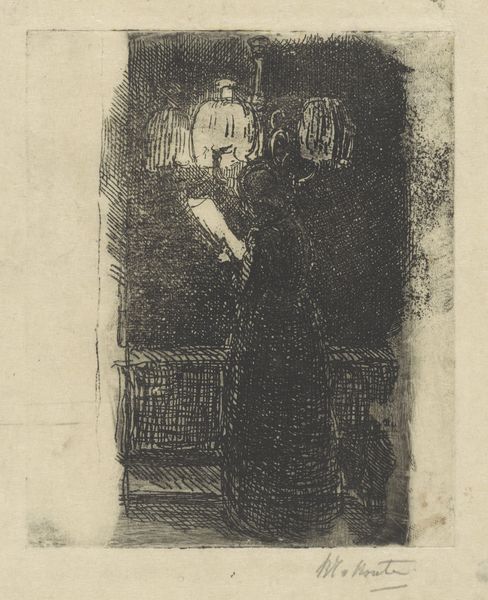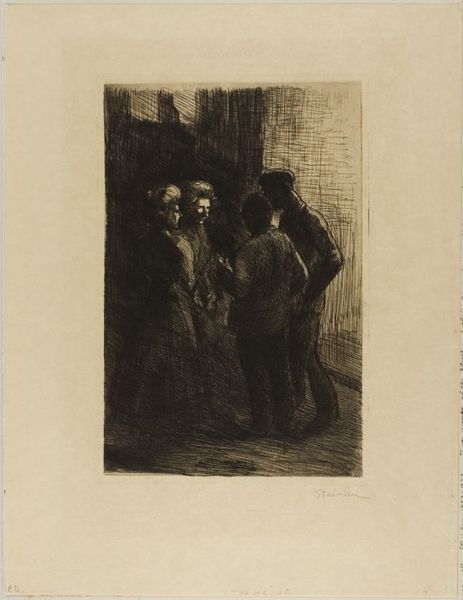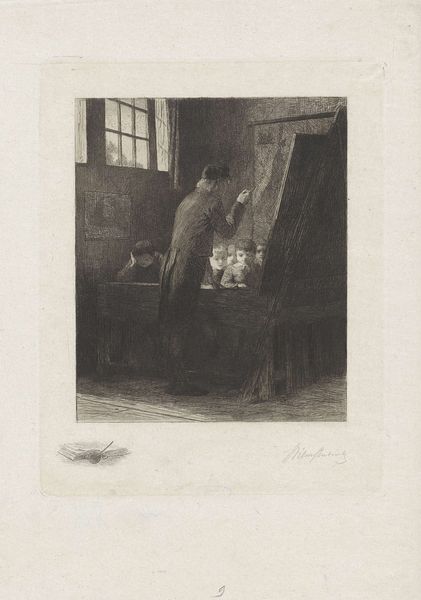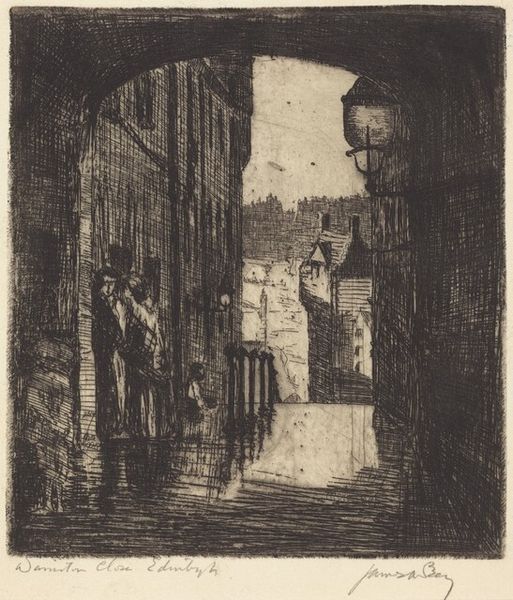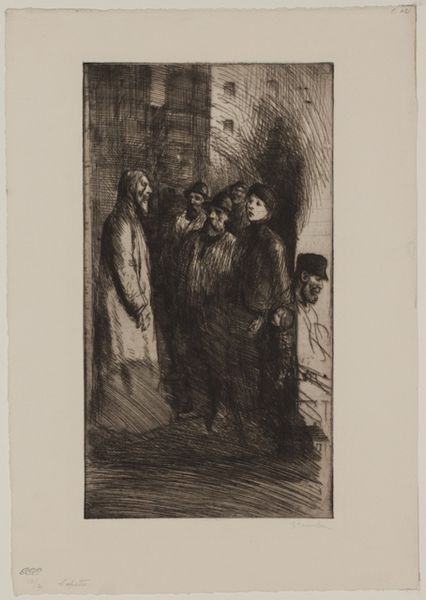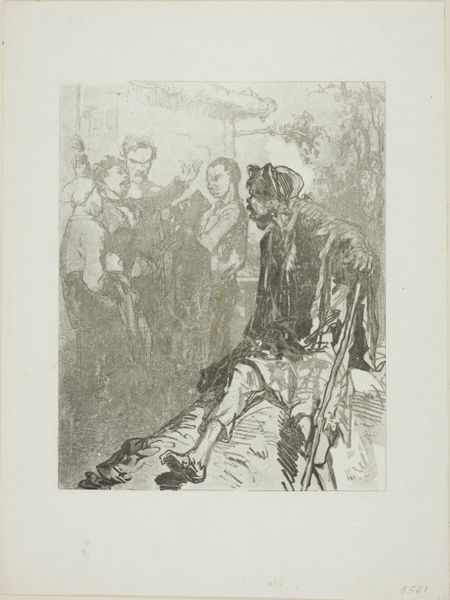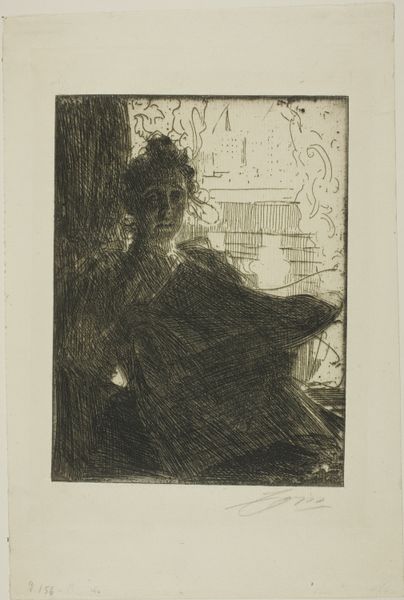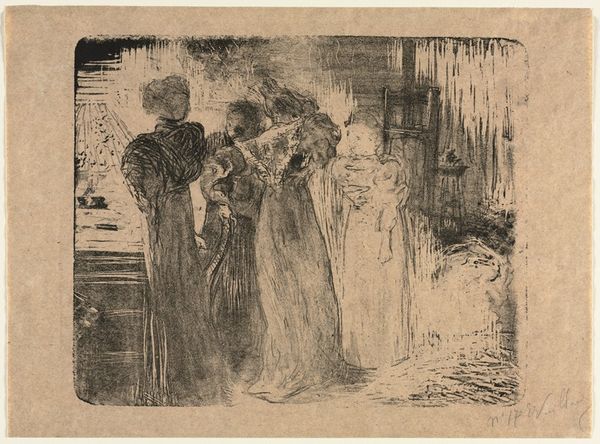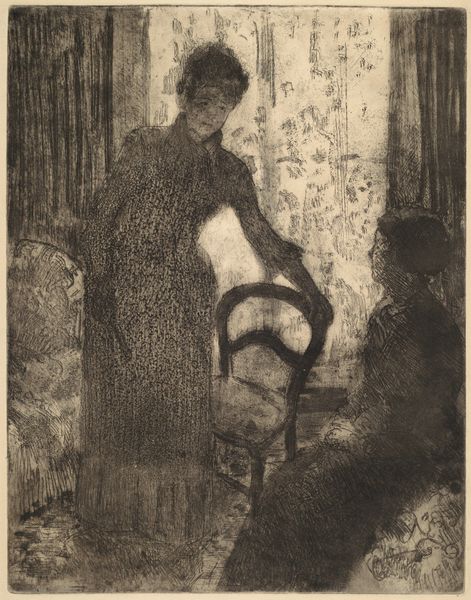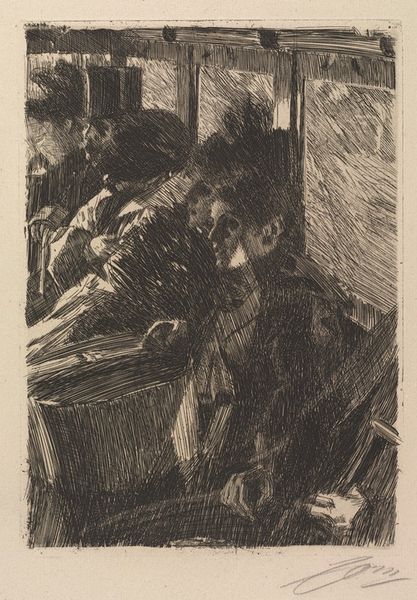
print, etching
#
portrait
# print
#
etching
#
figuration
#
modernism
Dimensions: plate: 34.4 x 24.9 cm (13 9/16 x 9 13/16 in.) sheet: 47.6 x 32.8 cm (18 3/4 x 12 15/16 in.)
Copyright: National Gallery of Art: CC0 1.0
Curator: Jules de Bruycker's "Le Paradis Théâtre", created in 1907, uses the printmaking technique of etching. The image appears to depict a man gazing out at what looks like a performance on stage, shrouded by heavy curtains. Editor: The mood is thick with anticipation and anxiety; the darkness makes it feel like peering into something forbidden or a profound revelation about to unfold. It is almost oppressive. Curator: That sense of anxiety is palpable, certainly. De Bruycker often imbues his urban scenes with such emotional weight. The use of etching, with its fine lines and tonal variations, contributes to this atmosphere, reminiscent of German Expressionism. Do you notice how he emphasizes the solidity of the man’s form against the ethereality of what is on the other side? Editor: Absolutely. There’s a clear juxtaposition. The solid, dark figure anchors the composition, but his gaze is fixed elsewhere. The glow emerging beyond the curtain, almost cinematic, hints at the performative aspects of modernity during this period, specifically for men; it gives that feeling of a show only for men, as the other figures at the edge insinuate. It makes me consider notions of spectatorship and how they intersect with power dynamics. Is paradise exclusionary? Curator: An interesting point. The use of the word "paradise" can itself carry so many connotations, across time and culture, often depicted as unattainable or beyond a veil. Editor: Which the thick, almost insurmountable curtain here further highlights. It seems to me a paradise defined by its inaccessibility. Who gets to be on stage? Who gets to look from behind the curtain, into paradise? And is what is on stage even paradise for everyone? Curator: Indeed, and these are the questions that continue to engage us when encountering such work. I find his choice of etching allows a particular visual tension, mirroring the work’s thematic concern with binaries: light and dark, seen and unseen. Editor: Right. And maybe the real "paradise" here isn't what’s depicted, but rather, the uncomfortable, perhaps even dangerous, interrogation of such ideals. What exactly are we aiming for? Curator: Precisely. Perhaps this invites us to look not beyond, but more deeply at who is standing next to us. Editor: Art as social and political theater, not just spectacle. Food for thought indeed.
Comments
No comments
Be the first to comment and join the conversation on the ultimate creative platform.

